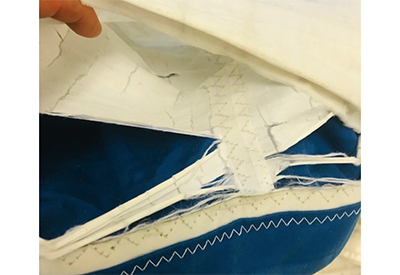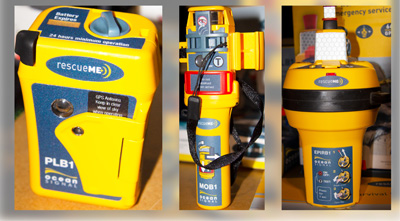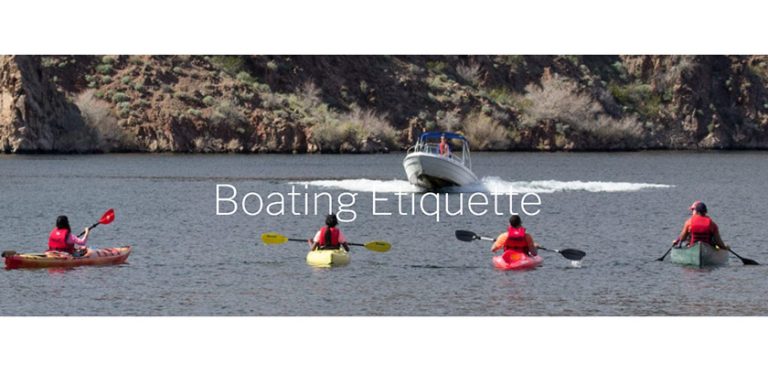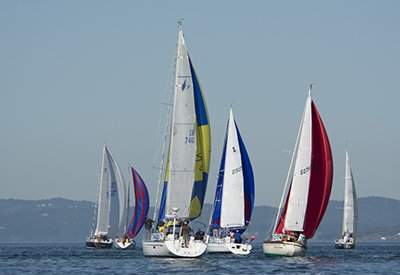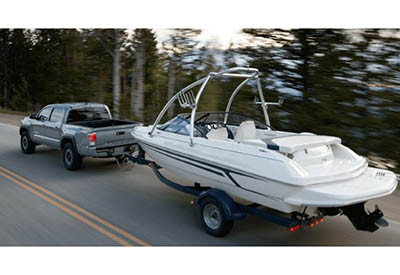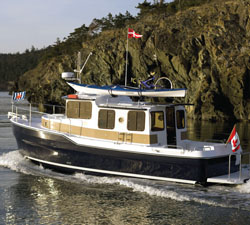Ropes for Sailboats – Part 1
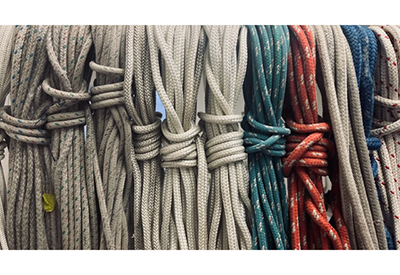
As the old saying goes, there are no ropes on a sailboat; only halyards, sheets, guys, vangs, cunninghams, barberhaulers, downhauls, furling lines, lifts, rodes and dock lines.
May 10, 2023
As the old saying goes, there are no ropes on a sailboat; only halyards, sheets, guys, vangs, cunninghams, barberhaulers, downhauls, furling lines, lifts, rodes and dock lines.
As a sailmaker, I try to concentrate on getting a sailboat to sail the best that it can. Quite often, my customers will make the job difficult for me by using the wrong type of rope for a particular purpose. I also come across those that think that worn out halyards make great docklines. This is some important information that needs to be cast out there.
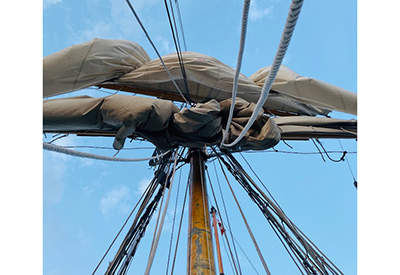 Running rigging is something that needs constant maintenance and replacement. This seems easy, but the wide array of fancy and fancier ropes at the chandlery can make this more difficult than it really is. Most sailors figure that if it is the most expensive rope, that it will be the best rope. This, like with sails, is rarely the case.
Running rigging is something that needs constant maintenance and replacement. This seems easy, but the wide array of fancy and fancier ropes at the chandlery can make this more difficult than it really is. Most sailors figure that if it is the most expensive rope, that it will be the best rope. This, like with sails, is rarely the case.
Let’s start with the humble dock line. Boats (all boats – power and sailboats) move and lurch when tied to a dock, so a stiff and stretch free rope would be a bad choice when we want the boat to rest as calmly as possible. A stretchy but very strong rope is what we are looking for. Nylon fits the bill for dock lines, and a plait or 3 strand construction gives great elasticity and very high ultimate strength. Many use a double braid construction, but a 3 strand rope is typically more chafe resistant, easier to inspect and resplice, and less expensive than double braid constructions. The same elasticity and strength make the same rope an excellent choice for anchor rodes.
 Next in line for replacement is the sheets, the ropes that adjust the clews of sails. Many mainsheet systems use a block and tackle arrangement. Since the rope is working at a diminished loading with the block setup, the most important part of choosing a type of rope is how well it runs in a block, and how it deals with twists that occur when handling. A mainsheet controlled in a cockpit may be coiled or faked many times every time you sail. This can lead to some twisting of the rope which can cause the sheet to jam as it twists at the cleat or lead block. Super stiff low stretch lines don’t work very well with purchase systems. A nice fresh double braid polyester is always a good choice, and there are some special single braids with fluffy fibres and high modulus blends that work well but at a significantly higher cost. A fresh piece of double braid polyester is always appreciated by the trimmer as it runs freely and isn’t stiff to handle like an aged piece of rope.
Next in line for replacement is the sheets, the ropes that adjust the clews of sails. Many mainsheet systems use a block and tackle arrangement. Since the rope is working at a diminished loading with the block setup, the most important part of choosing a type of rope is how well it runs in a block, and how it deals with twists that occur when handling. A mainsheet controlled in a cockpit may be coiled or faked many times every time you sail. This can lead to some twisting of the rope which can cause the sheet to jam as it twists at the cleat or lead block. Super stiff low stretch lines don’t work very well with purchase systems. A nice fresh double braid polyester is always a good choice, and there are some special single braids with fluffy fibres and high modulus blends that work well but at a significantly higher cost. A fresh piece of double braid polyester is always appreciated by the trimmer as it runs freely and isn’t stiff to handle like an aged piece of rope.
Jib sheets on smaller boats can easily be soft single braids or lighter double braid polyester. For handling, 5/16” (8mm) is most comfortable, but ¼” (6mm) is about the minimum for a sheet. If you trim on a winch, you can consider some lower stretch UHDPE (dyneema/spectra) cored rope to keep the diameter of the rope down to 3/8” (10mm) or slightly larger up to ½” (12.5MM) as a maximum. If you have self-tailing winches, the size is dictated by the self-tailing mechanism’s ability to grip. Winching the rope means you can live with the stiffer “performance” type of ropes if you really need it. If you have woven dacron or cruising laminate headsails, there probably isn’t much advantage to a really low stretch sheet. If you are prepared to buy carbon sails, consider getting some lower weight and lower stretch sheets.
Next time, we look at spinnaker sheets, ASYM sheets and halyards.
 Keven Piper, two-time Shark 24 World Champion, founded Hamilton, ON-based Bay Sails in 1998. Email: baysails@gmail.com
Keven Piper, two-time Shark 24 World Champion, founded Hamilton, ON-based Bay Sails in 1998. Email: baysails@gmail.com

